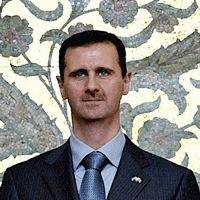VIENNA -- Last week was an eventful one for Syrian President Bashar al-Assad. With popular uprisings across Syria showing no sign of abating, international condemnation of the Syrian government's violent repression of the demonstrations intensified. On the eve of his highly anticipated speech on the Middle East, U.S. President Barack Obama announced sanctions against Damascus. And in an unprecedented move, the U.S. Treasury Department added Assad himself to its list of individuals under targeted financial sanctions. On Monday, the European Union, too, imposed its own set of sanctions.
Yet amid the domestic political earthquake that is shaking Assad's rule, another important development concerning Syria all but escaped the attention of the international press: International Atomic Energy Agency (IAEA) Director-General Yukiya Amano stated in an interview last Thursday that the Vienna-based nuclear watchdog has information indicating that Syria was most likely building a clandestine nuclear reactor in 2007.
The issue itself is not news: In September 2007, Israeli fighter jets bombed a site in the northern Syrian city of Dair al-Zour. In April 2008, the United States publicly released intelligence indicating the site housed a clandestine reactor and that Syria had acquired the technology from North Korea, in violation of U.N. sanctions against Pyongyang.

